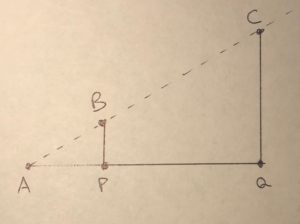Cathy Kessel wrote an article with Liping Ma that discuss “unit fraction” vs “fractional unit” and has added a remark to the appendix about this.
Here is the new version.
Hi everybody, Cathy Kessel has compiled all the suggestions that people have made here and other places over the years to produce a final version of the progressions. Here is the compiled document of all the progressions.
And here are two documents outlining the major changes from previous versions.
Note that the University of Arizona has deleted the website that used to host the progressions. I am working to have that url redirect here.
Hi everybody, in order to deal with the spam problem I have deleted all users regarded by WordPress as spam users. These are defined as users who have never posted. Unfortunately this seems to have caught some legitimate users as well. Their content is still on the blog, with the author marked as anonymous.
By popular demand Cathy Kessel has produced a document outlining the major changes in the recent version of the progressions.
Here is the almost final draft of the modeling progression.
Cathy Kessel has been working hard to incorporate the feedback from this blog and from other places into final versions of the progressions. Here is the close to final version of the progressions up through Ratios and Proportional Relationships. Major edits include an expanded preface, a comprehensive introduction, and some significant additions to the fractions progression.
Cathy Kessel is working on editing the progressions documents into final versions, incorporating comments from this blog and elsewhere and filling in gaps. Here is the fractions progression. We will be rolling out the others over the next few months. Comments welcome!
With the high school writing work in full swing, I’ve been remiss in posting here lately. I do have some ideas saved up! Meanwhile, Kate Nowak and I have a piece about instructional routines over at the IM blog.
I’ve been meaning to let you know about the Illustrative Mathematics blog, which launched a few weeks ago. It has blog posts by members of the IM community about our grades 6–8 curriculum and about teaching practice, including a whole series on the 5 practices framework of Smith and Stein. Also, we will be cross posting any IM related posts I write here over there as well. I hope you find our new blog useful!
In my last post I wrote about the following standard, and mentioned that I could write a whole blog post about the first comma.
8.F.A.3. Interpret the equation $y = mx + b$ as defining a linear function, whose graph is a straight line; give examples of functions that are not linear. For example, the function $A = s^2$ giving the area of a square as a function of its side length is not linear because its graph contains the points $(1,1)$, $(2,4)$ and $(3,9)$, which are not on a straight line.
The comma indicates that the clause “whose graph is a straight line” is nonessential for identifying the noun phrase “linear function.” It turns the clause into an extra piece of information: “and by the way, did you know that the graph of a linear function is a straight line?” This fact is often presented as obvious; after all, if you draw the graph or produce it using a graphing utility, it certainly looks like a straight line.
When I’ve asked prospective teachers why this is so, I’ve gotten answers that look something like this:
We know that a linear function has a constant rate of change, $m$. If you go across by 1 on the graph you always go up by $m$, like this:
So the graph is like a staircase. It always goes up in steps of the same size, so it’s a straight line.
This is fine as far as it goes. It identifies the defining property of a linear function—that it has a constant rate of change—and relates that property to a geometric feature of the graph. But it’s a “Here, Look!” proof. In the end it is showing that something is true rather than showing why it is true. Which is to say that it’s not a proof.
Still, the move to a geometric property of linear functions is a move in the right direction, because it focuses our minds on the essential concept. We all know that any two points lie on a line, but three points might not. What is it about three points on the graph of a linear function that implies they must lie on a straight line?

Line from $A$ to $B$ to $C$ is dotted because we don’t know it’s a line yet
Because a linear function has a constant rate of change, the slope between any two of the three points $A$, $B$, and $C$ is the same. So $|BP|/|AP| = |CQ|/|AQ|$, which means there is a scale factor $k =|AQ|/|AP| = |CQ|/|BP|$ so that a dilation with center $A$ and scale factor $k$ takes $P$ to $Q$, and take the vertical line segment $BP$ to a vertical line segment based at $Q$ with the same length as $CQ$. Which means it must take $B$ to $C$.
But (drumroll) this means that there is a dilation with center $A$ that takes $B$ to $C$. Dilations always take points on a ray from the center to other points on the same ray. So $A$, $B$, and $C$ lie on the same line.
I don’t really expect students to get all of this, at least not right away. I’d be happy if they understood that there is a geometric fact at play here; that seeing is not always believing.